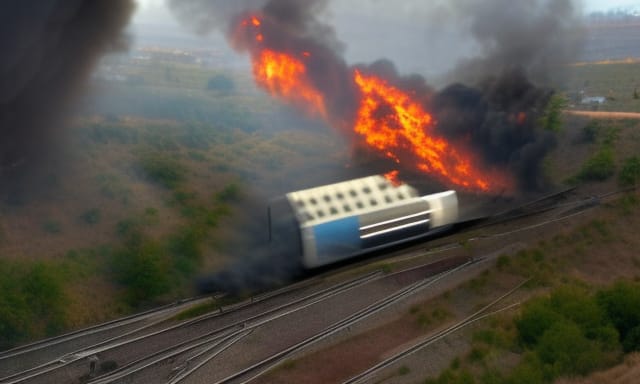
A Real Train Wreck
Rail accidents have become a growing concern in recent times as we have witnessed an alarming increase in the number of train derailments and collisions. These incidents have resulted in a significant number of deaths and injuries, as well as significant damage to infrastructure and property. The reasons behind this recent rash of rail accidents are complex and multifaceted, but several factors can be identified.
One of the primary reasons for these accidents is the aging infrastructure of our rail systems. Many rail tracks and bridges were built decades ago and have not been adequately maintained, leading to a high risk of structural failure. In some cases, these failures can cause trains to derail or collide with each other, leading to tragic consequences. To mitigate this risk, it is imperative that governments and rail operators invest in the repair and replacement of aging infrastructure.
Another major factor contributing to rail accidents is human error. Train operators and maintenance crews are under immense pressure to meet tight schedules and ensure that trains are running on time. This pressure can lead to mistakes, such as failing to properly inspect trains or not following proper safety protocols. To address this issue, it is crucial that rail operators provide proper training to their employees, ensure adequate staffing levels, and implement effective safety protocols.
Furthermore, the use of technology in the rail industry has also contributed to the recent rash of accidents. While technology can greatly enhance safety and efficiency, it is not infallible. In some cases, technology can malfunction or fail, leading to accidents. Additionally, the use of technology can lead to complacency among workers who rely too heavily on automated systems, leading to a lack of attention to potential safety hazards. To address this issue, rail operators need to ensure that their technology is properly maintained and that workers are adequately trained to use it.
Finally, weather conditions have also contributed to the recent spate of rail accidents. Extreme weather events, such as hurricanes and heavy snowfalls, can cause rail tracks to become damaged or obstructed, leading to train derailments or collisions. To mitigate this risk, rail operators need to be vigilant in monitoring weather conditions and taking appropriate precautions, such as suspending service during severe weather events.
The recent rash of rail accidents highlights the urgent need for governments and rail operators to prioritize safety in the rail industry. This can be achieved by investing in the repair and replacement of aging infrastructure, providing adequate training and staffing levels, ensuring that technology is properly maintained and monitored, and implementing effective safety protocols. By taking these steps, we can reduce the risk of rail accidents and ensure the safety of passengers and workers in the rail industry.
